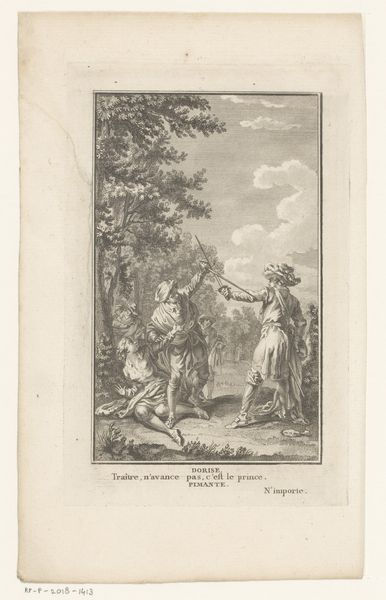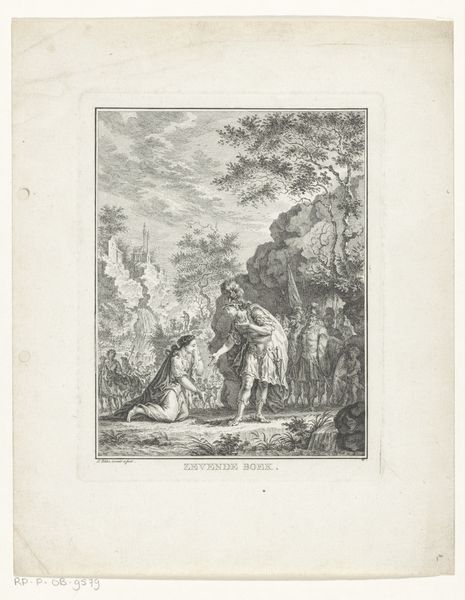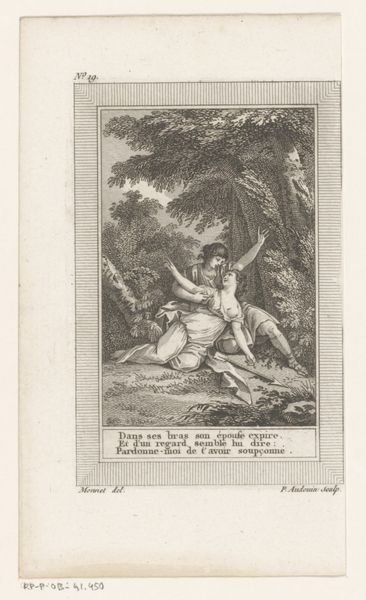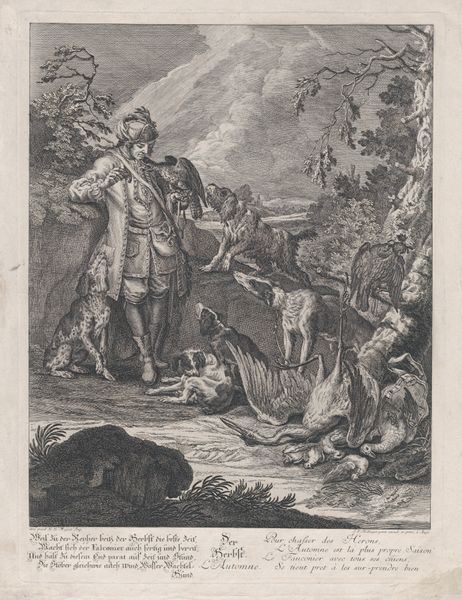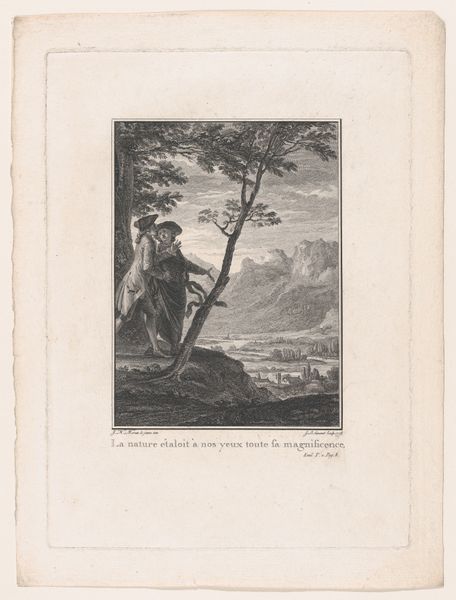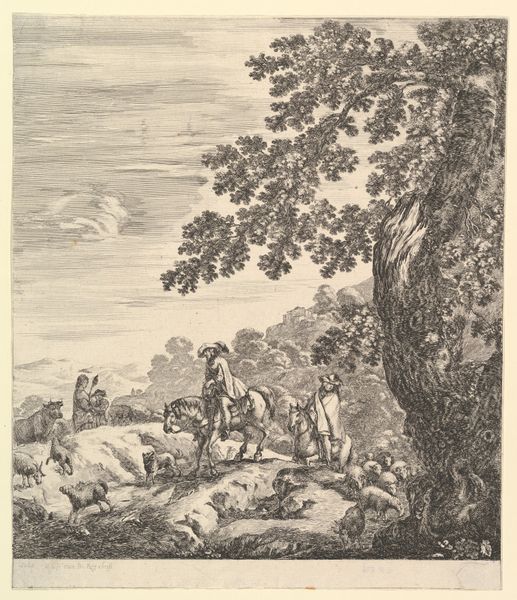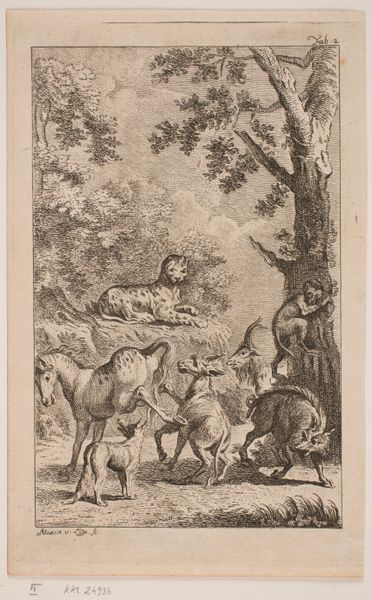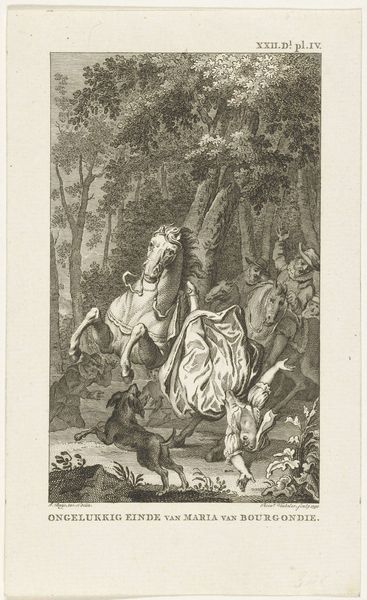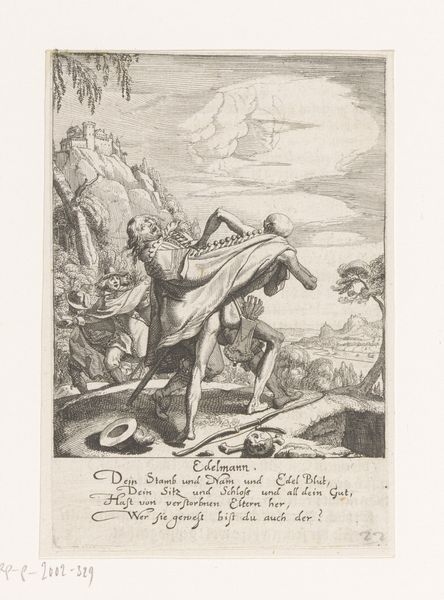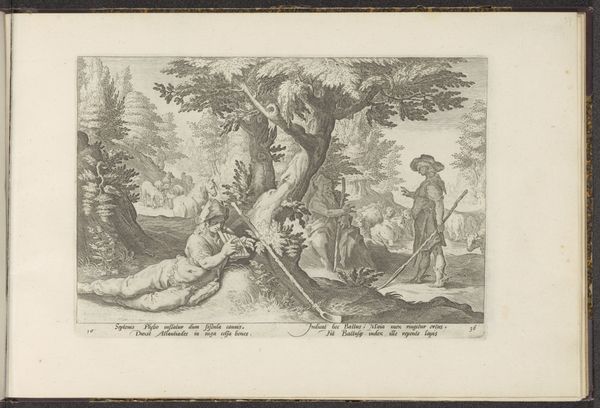
drawing, print, paper, engraving
#
drawing
#
neoclacissism
# print
#
landscape
#
figuration
#
paper
#
history-painting
#
engraving
Dimensions: height 155 mm, width 95 mm
Copyright: Rijks Museum: Open Domain
This print, titled "Paris wordt door herders gevonden," was made by Pierre Audouin, in France. It presents a scene lifted from classical mythology: the infant Paris, son of the King of Troy, is abandoned in the wilderness, only to be discovered and raised by shepherds. The story of Paris was well known in 18th-century Europe, often deployed to explore themes of fate, free will, and social mobility. Audouin’s image participates in that conversation. Note the theatrical gestures of the shepherds, who appear like actors on a stage. The inscription below the image says: "In the arms of innocence. Smiling, he awaited death". This heightens the drama and sentimentality of the scene. Prints like these circulated widely in 18th-century France. They were relatively inexpensive and could be enjoyed by a broad audience. As a historian, I would want to know more about how images like this functioned in French society: Who was buying them? Where were they displayed? And how did they shape people's understanding of classical mythology and its relevance to contemporary life? The answers can be found in the archives of the Rijksmuseum.
Comments
No comments
Be the first to comment and join the conversation on the ultimate creative platform.
